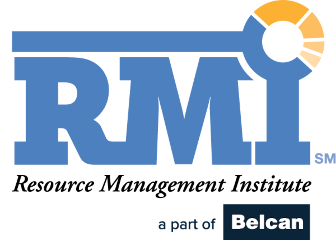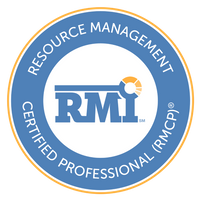On February 10, 2021, HBR published a special collection of articles entitled the Burnout Crises. The lead article by Jennifer Moss made the point that the burnout that HR has been blaming on Covid-19 is, in fact, nothing new, and it isn’t a problem that the employee can be expected to fix on their own by “improving their self-care.”
According to Ms. Moss, the problem is caused by the way we structure jobs and manage our people. Unfortunately, no organization wants to hear “you’re doing it wrong.” We need to look no further than the Goldman Sacks response to the 100-hour work week to understand that some organizations are unwilling to change.
I believe the job design problem in IT and increasingly in NPD is uniquely fixable for one reason. Because fixing it would increase productivity, lower costs, and improve corporate agility by executing strategy faster. The fact that it also prevents burnout is simply a side benefit.
The secret to understanding burnout is that it’s a negatively self-reinforcing feedback loop. While Ms. Moss’s article lists six causes of burnout, we’ll only be exploring the first three because they are so tightly bound together.
- Unsustainable workload
- Perceived lack of control
- Insufficient rewards for effort
Based on hundreds of conversations with IT departments, I can safely say that most organizations would steadfastly deny they subject their employees to unstainable workloads. The problem is that there is a massive difference between the concept of workload and the number of hours that employees are required to work.
This is a nuance that most managers simply aren’t equipped to understand unless they have either read the literature on burnout OR have begun to understand how the human brain is wired[1]. If we are all humans, why would a manager not intuitively understand what their people are feeling? Because the manager doesn’t have the same type of workload.
Let’s begin by deconstructing exactly why there is a workload issue rather than a work hour issue. It turns out that the human brain is wired for a feeling of accomplishment. A sense of accomplishment generates dopamine (which is considered one of the “feel-good” hormones.) A human being, most specifically a knowledge worker, becomes depressed when faced with a never-ending workload because they know they will never get their allotted amount of dopamine. Completion is critical, and we are depriving people of celebrating their good work.
When projects first became a formal approach to completing technology work, the projects were staffed by people who had what we might call semi-routine jobs. When an individual accepted a project assignment, they were removed from their previous routine and given instead a sometimes hard, stressful, and intense experience of COMPLETING something new. Something they could be proud of (WE BUILT THIS.) They were thanked for their work; in many cases, they were promoted, and since it was a special assignment, they knew they were in control of the hours they would work in the FUTURE (a normal 40.)
With the advent of multi-project management and Agile-DevOps, we have created a situation where people work on assigned tasks or stories. They don’t feel any ownership of the end-product (if they even know what the end-product is), and they aren’t even allowed enough time to finish a task without being interrupted and assigned to something else. One organization shared with me a story I still find unfathomable. In their organization, multiple developers often work on the same story. If a story takes 1 to 3 days to complete (in a 2-week sprint), this means that no single developer could ever find enough time in their week to FINISH the story they started.
If a technical person can no longer be sure that they can ever finish what they have started, they have an unsustainable workload. It is also unclear that there is any reward other than a paycheck for doing the work. A story isn’t a technical challenge. It doesn’t take brilliance or flair. It’s just routine work.
100-hour weeks tend to lead people to a crisis point (and press coverage) faster than the death by a thousand cuts we are inflicting on our employees today. People can put up with a lot. If they think they are fairly paid and like the team they’re working with, most people will stick to their jobs until they physically and mentally can’t do it anymore.
If the problem is this severe, why isn’t this the VP’s problem and not the problem of the RMO? Because it’s the RMOs in the organization at ground zero. They are the ones who should be hearing all the complaints from the resource managers. And, finally, they have access to tools that will make a case for change.
One company shared with me that their resource managers were continuously raising the problems we’ve been discussing, but it wasn’t until the RMO showed the resource capacity implications to senior management (using the capability of what-if forecasting) that management started to listen. Management physically had to see that having 15 or 20 simultaneous projects took longer and resulted in fewer projects completing in a single year than starting ten projects and rapidly finishing them and then starting another ten as resources freed up.
The key element in fixing the burnout crisis is gaining control of the workload, which requires improved RCP. I invite you to download my white paper Achieve Agility by Practicing the Four Disciplines of Strategic Workforce Enablement as a way to understand the broader portfolio and RCP issues in more depth. Finally, consider following me on LinkedIn; I’m always writing more on this subject, and I appreciate hearing from people working on the frontlines of solving this problem.
[1] Your Brain at Work by David Rock
Donna Fitzgerald first discovered the wonders of resource management when she was assigned to help productize the home-grown resource management system at Oracle. Having once been Silicon Valley CFO as well as a program manager she immediately recognized that resource management was the key to getting strategy executed. As an ex-Gartner analyst her research has also led her to believe that good RM is the key to keeping employees healthy, happy and engaged at work.





